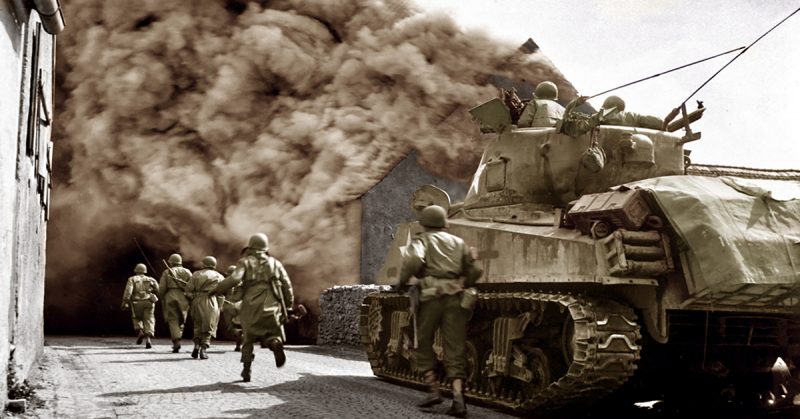The Second World War saw massive numbers of armored vehicles deployed on all sides. While most were tanks, artillery, and transports, there were also lots of more unusual vehicles.
Matilda Hedgehog
Created by the Australian Army, this was a British Matilda tank with a difference. A rotating platform was installed above the engine, carrying seven naval spigot mortars. Though designed to attack submarines, these mortars were perfect for smashing open Japanese bunkers on Pacific islands, and the Hedgehog let the Australians carry them close enough to hit their targets.
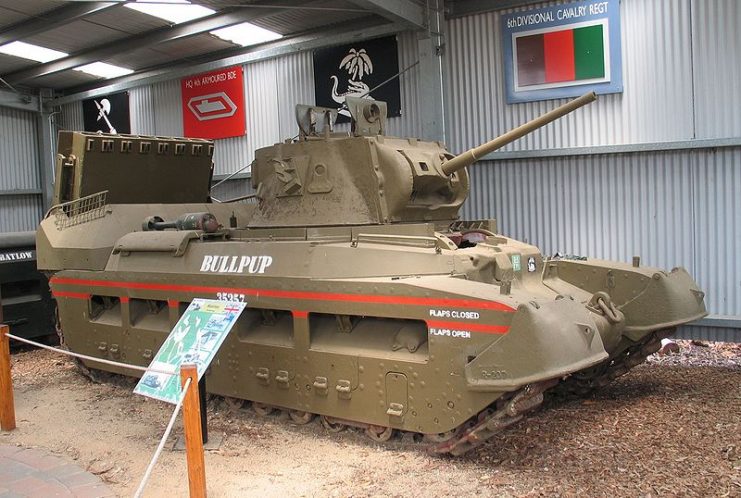
Ronson Flamethrower
A Canadian built flamethrower, the Ronson was sold to the US Marine Corps. They installed it on M3 and M5 tanks as well as LVT3 amphibious vehicles. It was effective at burning out enemies in defensive positions and earned the nickname of Satan for its burning effect.
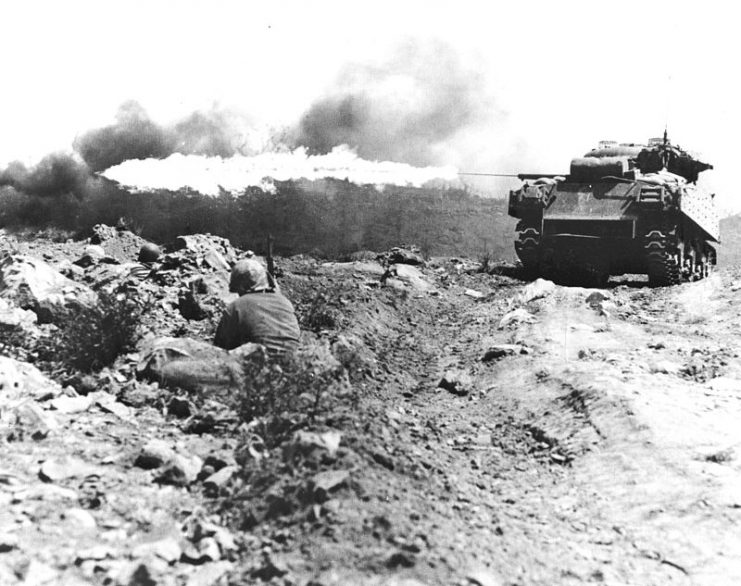
Befehlspanzer Panther
German officers commanding tank formations needed a way to keep up with their troops. Traveling in unusual looking vehicles could attract enemy fire, so they often used adapted tanks. The Befehlspanzer Panther was a late war example in which ammunition space was sacrificed in favor of radio gear.
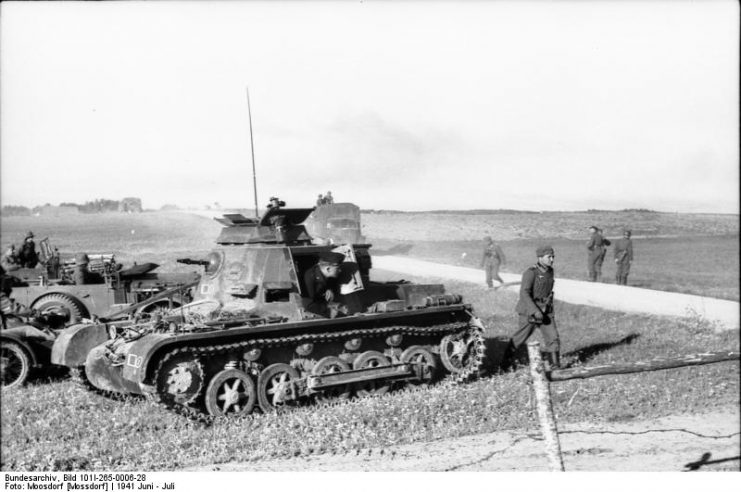
Borgward B IV
A German demolition vehicle, the Bogward IV was a tracked vehicle with a large explosive attached to the front. The driver drove as close to an obstacle as he safely could, then finished the job of steering and detonation by remote control.
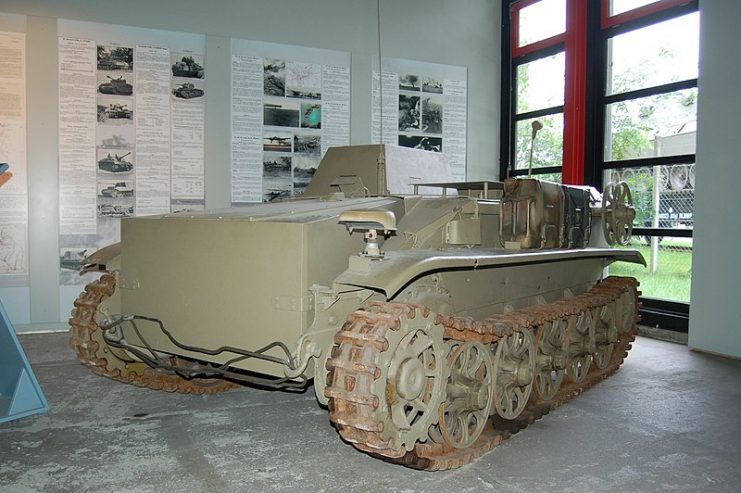
Bruckenleger IV
The Bruckenleger was a German bridge layer designed to help armor cross ditches. It was used in the invasion of France, where surprise proved better for crossings than specialist vehicles, leading to its abandonment.
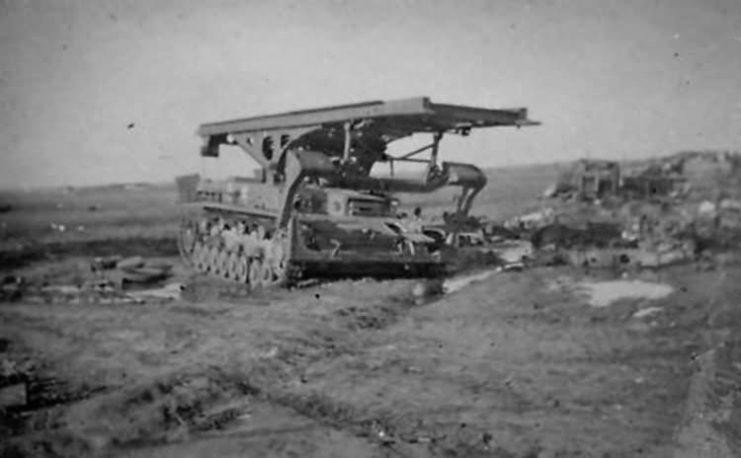
Goliath
A German remote-controlled demolition vehicle, the Goliath was less than five feet long and two feet high. Cheap enough to be disposable, it was fitted with a 132lb explosive charge. Directed against enemy defenses or into a minefield, it then exploded, breaking through barriers or detonating mines.
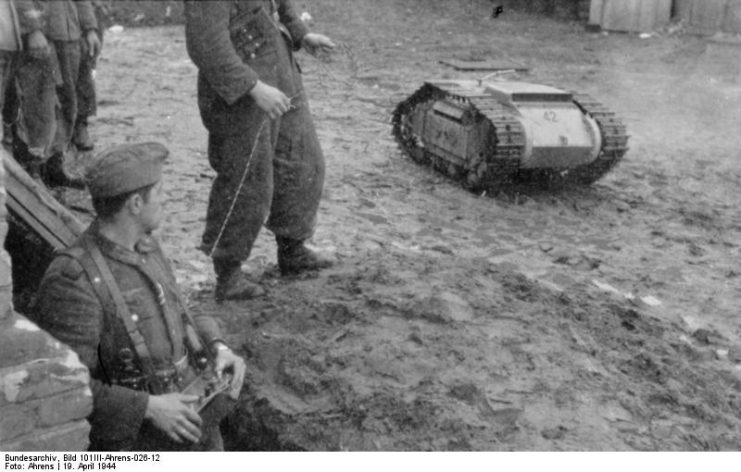
PzKpfw III (Flamm)
Designed to help with fighting in built up Russian terrain, this was a German flamethrower tank that replaced the less successful PzKpfw II (Flamm). Increased armor at the front let it get close enough to effectively use its weapon.
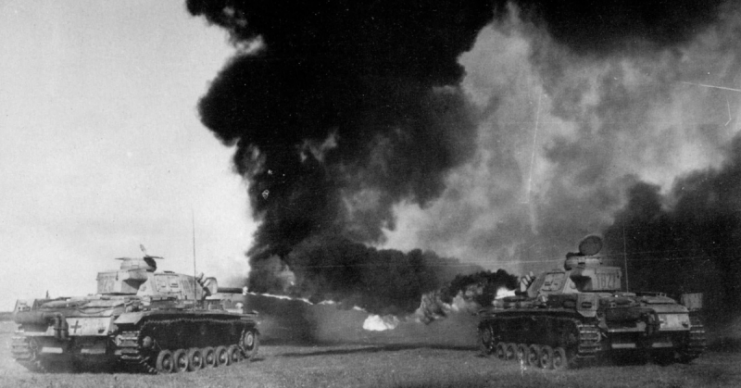
Raumer-S
Consisting of two massive steel boxes on heavy steel wheels, this was designed to clear minefields simply by driving over the mines and surviving. Like several late war German weapons, it was not ready for action before the fighting ended.
CV 33 Bridgelayer
One of the earliest bridge-laying tanks, this was an Italian CV 33 light tank with an added bridge. The short, lightweight bridge could be winched over the tank and into position for crossing narrow obstacles.
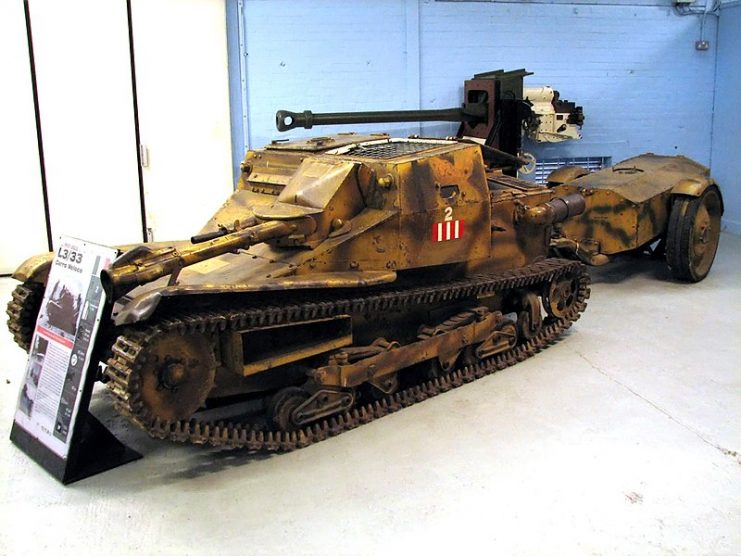
Churchill Armoured Vehicle, Royal Engineers
The disastrous Dieppe Raid of 1942 taught the British that engineers needed the tools and protection of specialist vehicles. They converted Churchill tanks to this purpose, replacing their ammunition racks with demolition and engineering supplies, their main guns with short-range demolition mortars. This became the first Armoured Vehicle, Royal Engineers (AVRE).
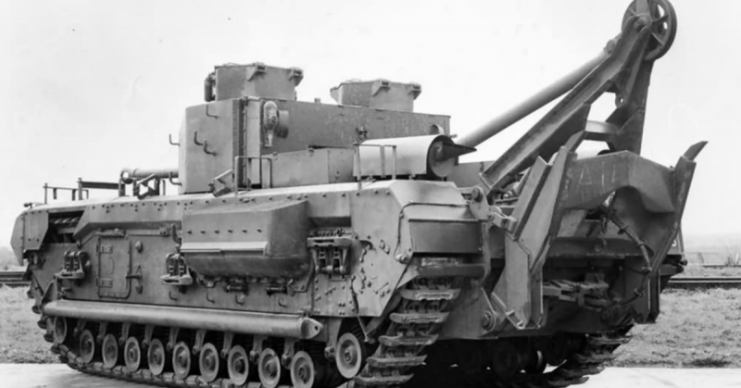
Churchill Assault Bridge AVRE
Created by the Canadian Army, this was a variation on the Churchill AVRE. It carried a 34ft small box girder bridge which could be dropped to cross ditches or in pairs to get across walls.
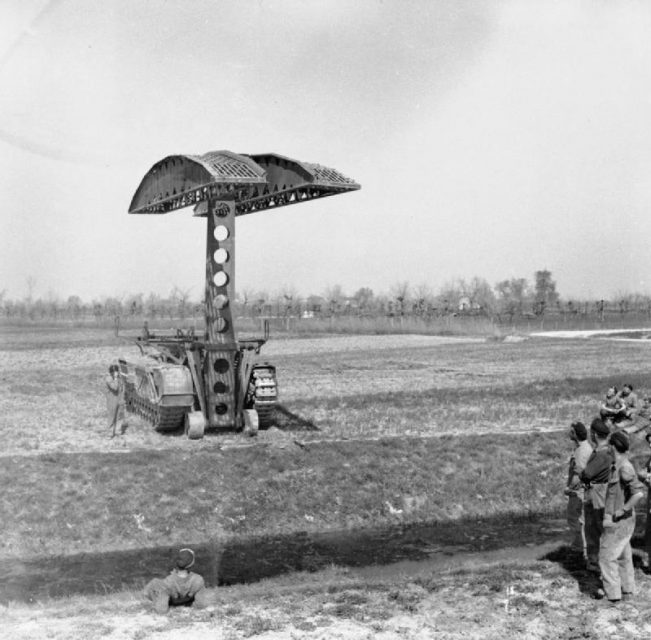
Churchill Carpet
The British were the masters of specialist engineering tanks, which they called funnies. Among these absurd sounding but effective vehicles was the Carpet, a Churchill tank with a drum of hessian matting suspended from the front. As it advanced across barbed wire, it flattened the wire and covered it in a pathway of hessian, creating a safe route through for infantry.
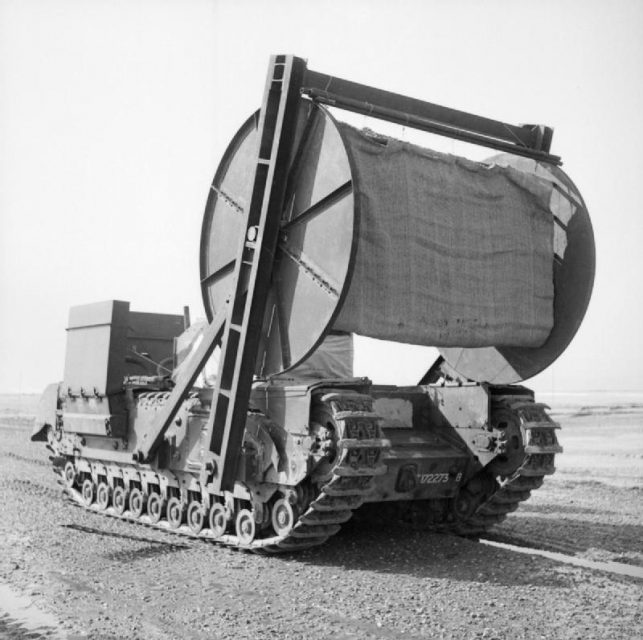
Churchill Demolition Tanks
To destroy solid enemy obstacles, more Churchills were turned into demolition vehicles. These were fitted with a series of explosive devices, known as Carrots, Onions, and Goats, carried in front of the tank and detonated to destroy obstructions.
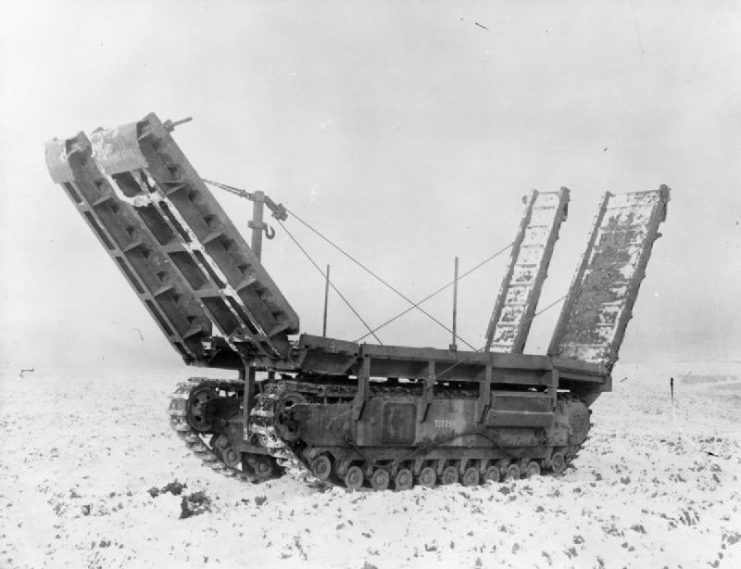
Grant Special-Purpose Tank
Another British invention, this was an American Grant tank mounted with a specialist Canal Defense Light (CDL) turret. Far from a defensive tool, the CDL was a powerfully bright light meant to dazzle enemies during night fighting. It was never effectively used in this way, and mostly just illuminated Allied river crossings.
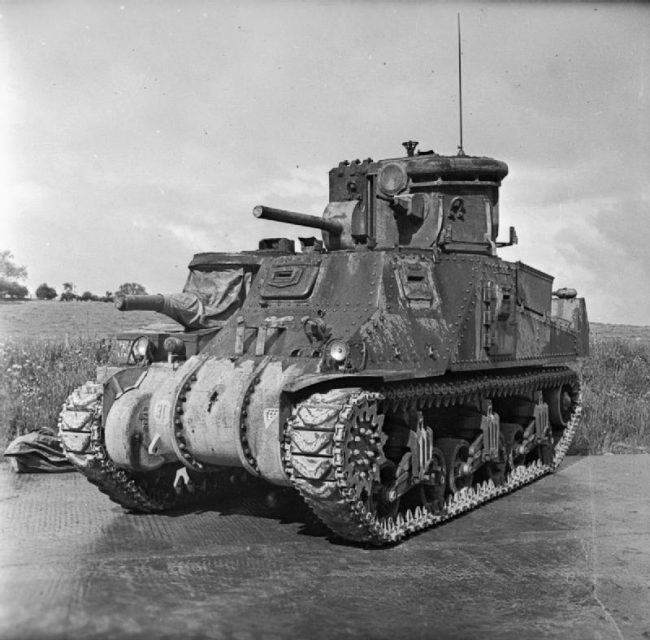
Scorpion
Invented by the South African Major A. S. du Toit, this was a tank with a revolving drum covered in chain flails attached to the front. As it advanced across a minefield, the chains detonated the mines, destroying them before they were close enough to damage the tank. The same device was later used for the more effective Sherman Crab.
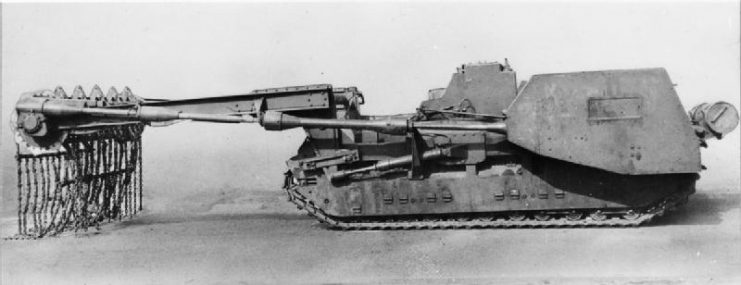
Wasp
Instead of attaching the Ronson flamethrower to a tank, the British installed it in their Universal Carrier vehicle, creating the Wasp. The weapon could only be aimed by turning the whole vehicle, but the Canadian-designed Wasp Mark 2C remained in use well past the end of the war.
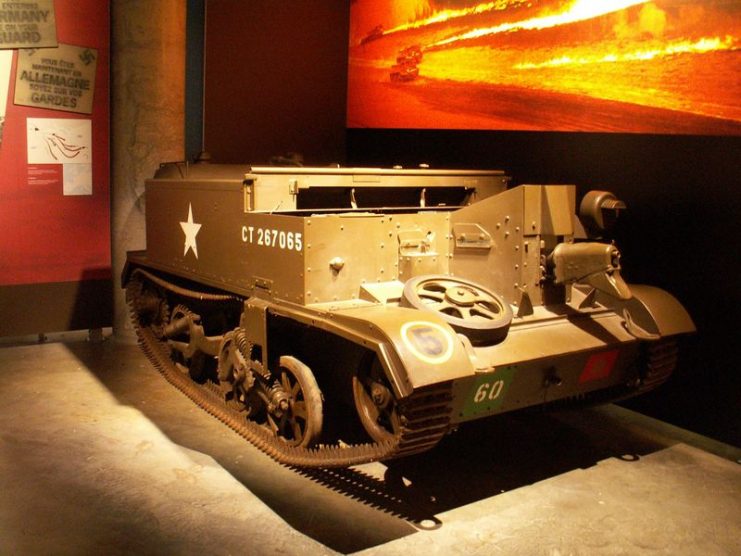
M4 Tankdozer
The Americans soon discovered that bulldozers were invaluable for clearing roadblocks and damaged roads, but that their drivers were dangerously vulnerable to enemy fire. They, therefore, developed the Tankdozer, a modification kit that fitted a bulldozer blade onto the front of a Sherman M4 tank, for safer road clearance.
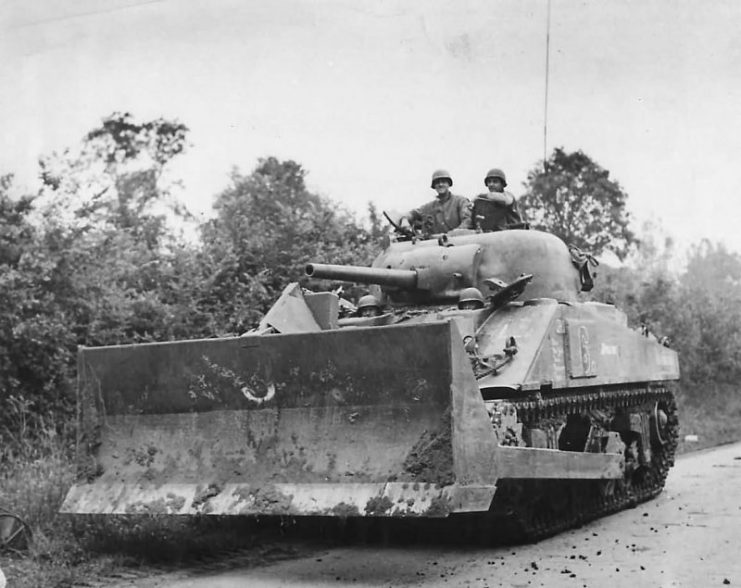
Rhinoceros
In the summer of 1944, the Allies faced a serious challenge. The dense hedgerows of the Norman bocage provided ideal defensive terrain for the Germans and were hard to destroy with conventional tools. The American Sergeant Curtis D. Culin created the solution known as the Rhinoceros, a set of steel plates inspired by plow shares which were welded onto the front of tanks, allowing them to rip up hedgerows as they advanced.
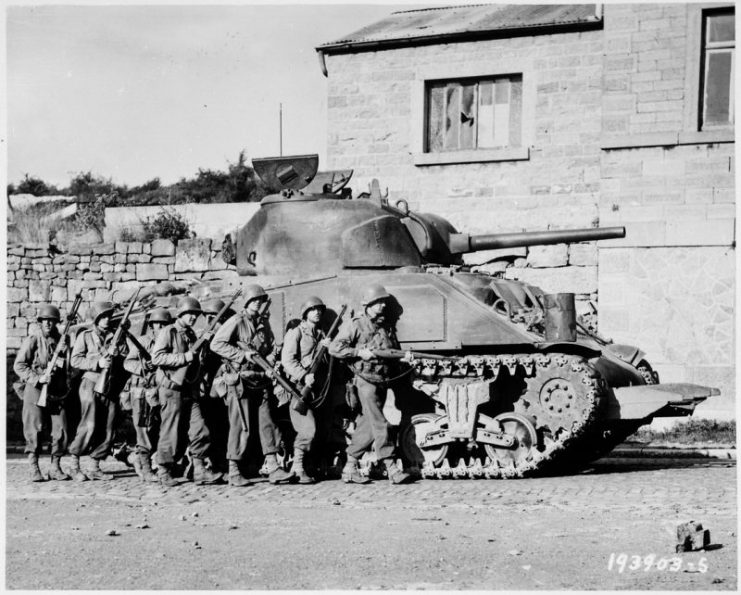
T10 Mine Exploder
The American solution to the minefield problem, the T1 Mine Exploder was a tank with heavy rollers in front of and behind it. These detonated mines, clearing a path. Though effective, early T10s were unwieldy to drive, leading to several variations as engineers sought to improve them.
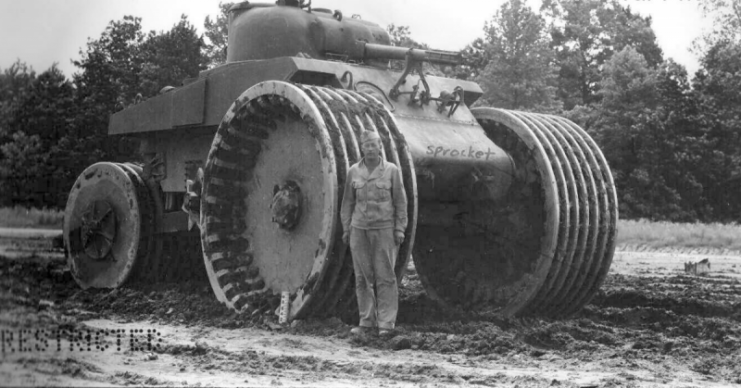
T31 Demolition Tank
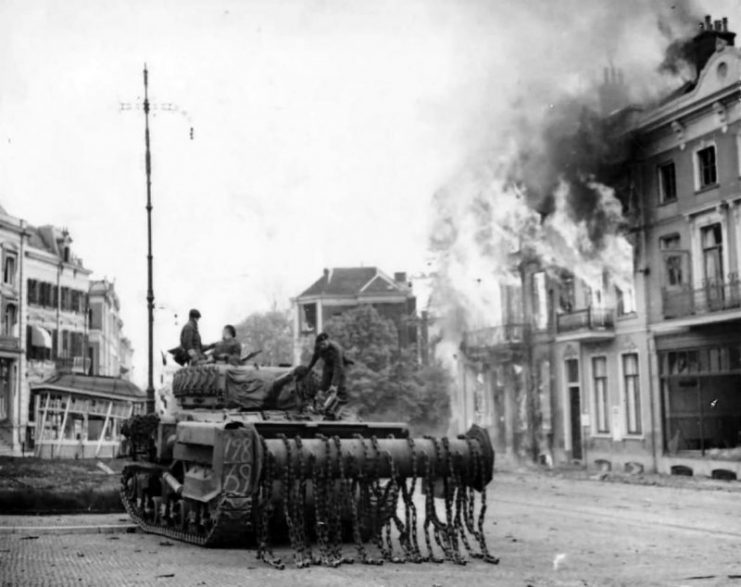
An American response to the Churchill AVRE, the T31 Demolition Tank was a specially adapted Sherman, with thick belly armor, a bulldozer blade, rocket launchers, and other specialist fittings. It proved ineffective in tests in 1945 and so was abandoned in favor of more modern designs.
